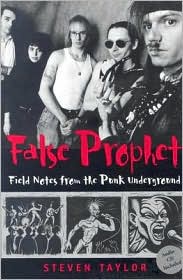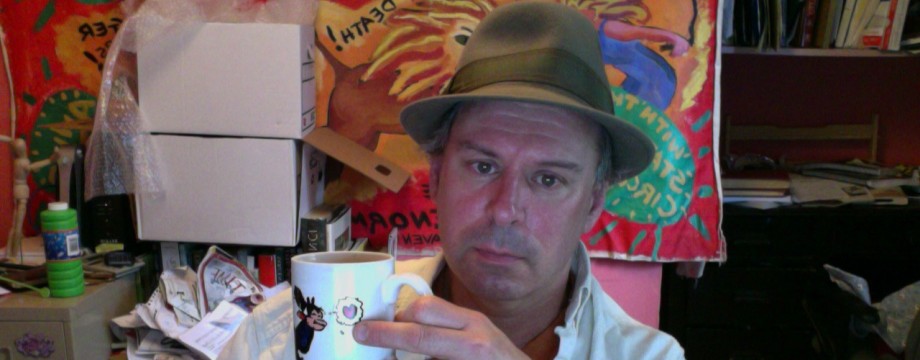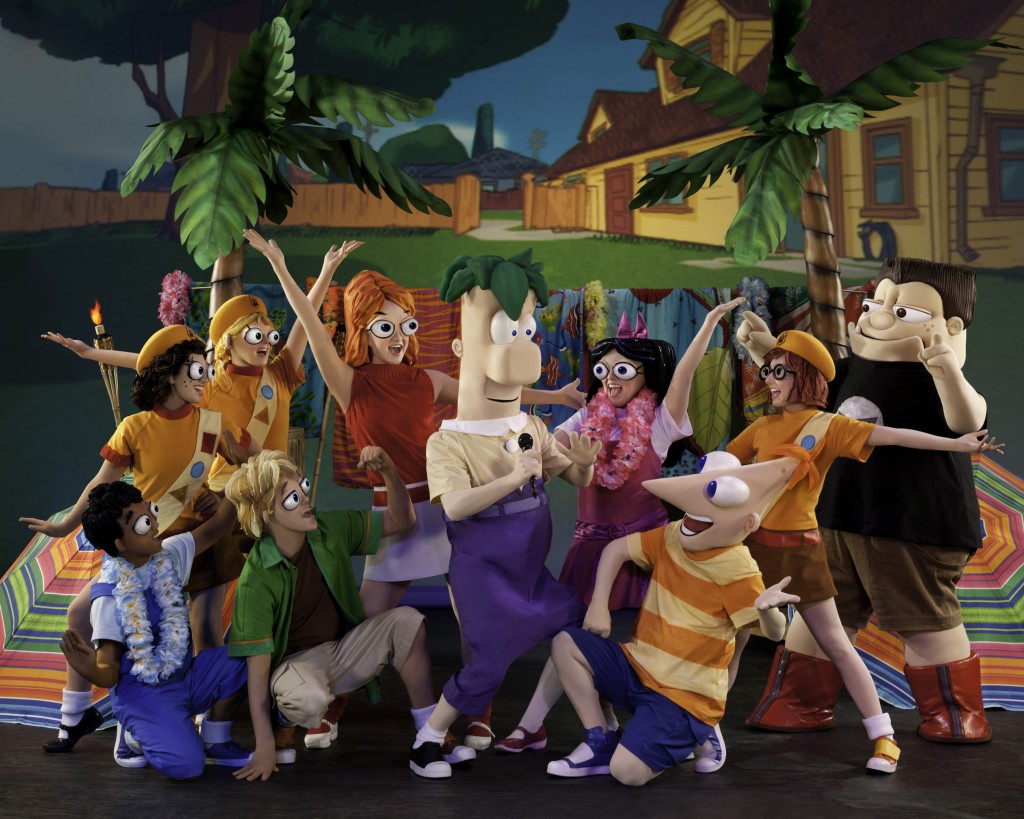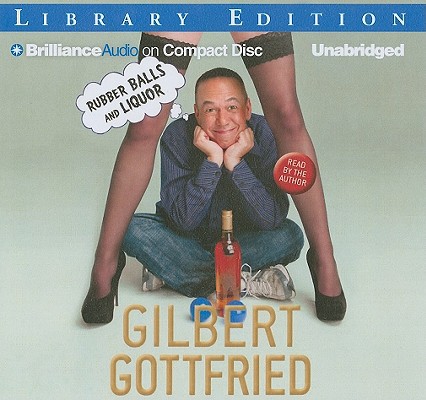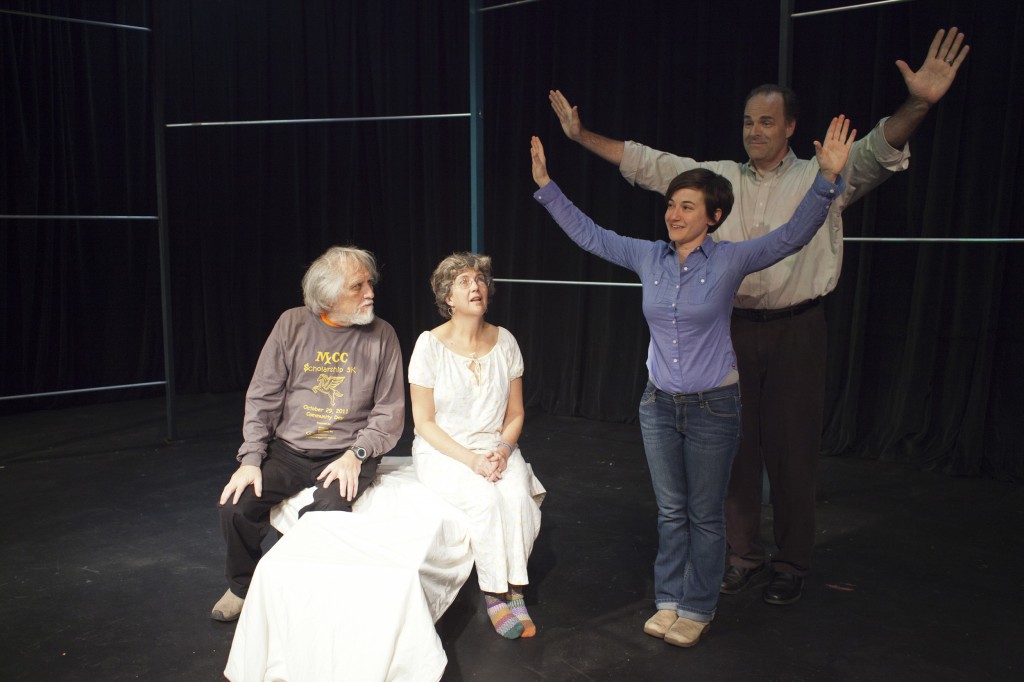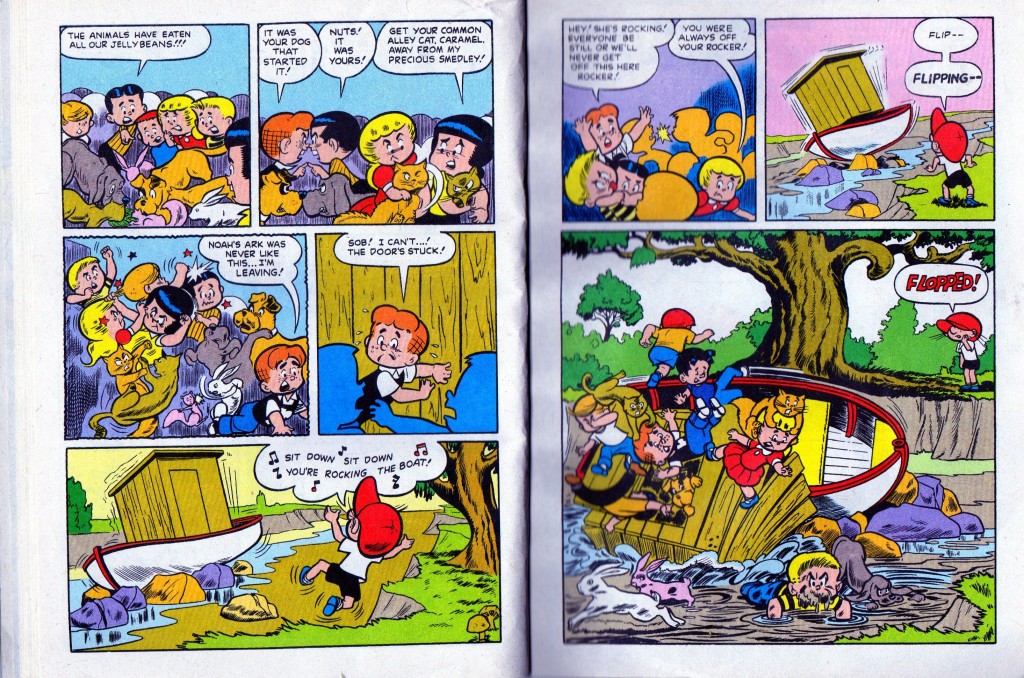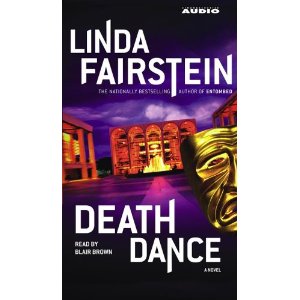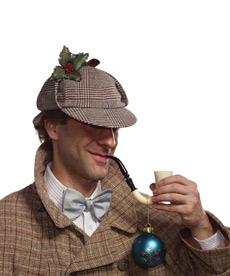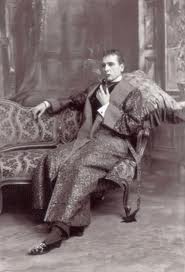A Thought in Three Parts
Through Nov. 19 at the Yale Cabaret, 217 Park St., New Haven. (203) 432-1566, yalecabaret.org.
By Wallace Shawn. Directed by Hallie Cooper-Novack. Set & Lights: Adam Rigg. Costumes: Martin Schnellinger. Sound: Palmer. Sound Associate: Keri Klick. Producer: Kate Ivins. Dramaturg: Delilah Dominguez. Stage Manager: Kirstin Hodges. Technical Director: Michael Place. “Summer Evening” performed by Chris Henry (David) and Lupita Nyong’o (Sarah). “The Youth Hostel” performed by Will Cobbs (Dick), Carmen Zilles (Helen), Jillian Taylor (Judy), Seamus Mulcahy (Bob) and Josiah Bania (Tom). “Mr. Frivolous” performed by Max Roll ) Mr. Frivolous.

Seamus Mulcahy and Jillian Taylor in "The Youth Hostel," the centerpiece of Wallace Shawn's A Thought in Three Parts, at the Yale Cabaret through Nov. 19. Photo by Ethan Heard.
A Thought in Three Parts has come, and makes a splash.
This is far from the first Yale Cabaret show to feature full frontal nudity. Nor is it the first to use bodily fluids as a sort of post-modern pie-in-the-face comedy fodder. In the context of the Yale Cabaret, it’s a natural extension of what’s been happening at the space for years now—an aggressive and open-minding testing of theatrical boundaries, a redefining of what theater is and what it can achieve.
The distinction of A Thought in Three Parts is that it’s a play by Wallace Shawn which has only been performed once before in this country. That prior production was just three years ago, done in Austin, Texas, by the Rubber Repertory Theatre. (Shawn happily attended the Austin production, and is scheduled to see the Cabaret’s this weekend.)
The play has been around since 1976. A London production in 1977 (under the title Three Short Plays) engaged the UK in the same debate about government arts funding and the content of the arts being funded as did Tim Miller and Karen Finley in this country a few years later.
A Thought in Three Parts could be considered ahead of its time, but not because it’s a seldom-produced play filled with sex and violence that’s near impossible to stage realistically; that sort of thing is a dime a dozen, and dates back to the Greeks.
Thirty-four years ago, when he was 34 years old himself, Shawn tapped the same concepts which had folks racing to big-screen comedies such as There’s Something About Mary and American Pie throughout the ‘90s: Sex is more funny than it is sad. Young people enjoy sex. Older people have funny ideas about the way young people enjoy sex.
Wallace Shawn is Wallace Shawn, so the levity of the sex act is shortlived. A Thought in Three Parts isn’t devoid of cheap sex gags (one of the characters is even named Dick), but has more cold-shower moments than it does erectile ones. These are plays of missed connections, miscommunications, chauvinism (male and female) and bitter recriminations. Unsurprisingly for these self-absorbed characters, the most satisfying and lasting sex they indulge in is masturbation.
First up is “Summer Evening,” in which a couple have found themselves a delightful hotel room but somehow can’t get in the mood, any mood. “The Youth Hostel” has a more absurdist style, and plays like a series of personal-chemistry experiments among free-spirited, needy young adults who are just beginning to grasp—and rebel about—mature relationship concepts like trust and respect. Following the frolicsome, bitter and explosive “Youth Hostel,” the short, sedate, sedentary and fully clothed monologue “Mr. Frivolous” ends the evening with an almost daunting decorum.
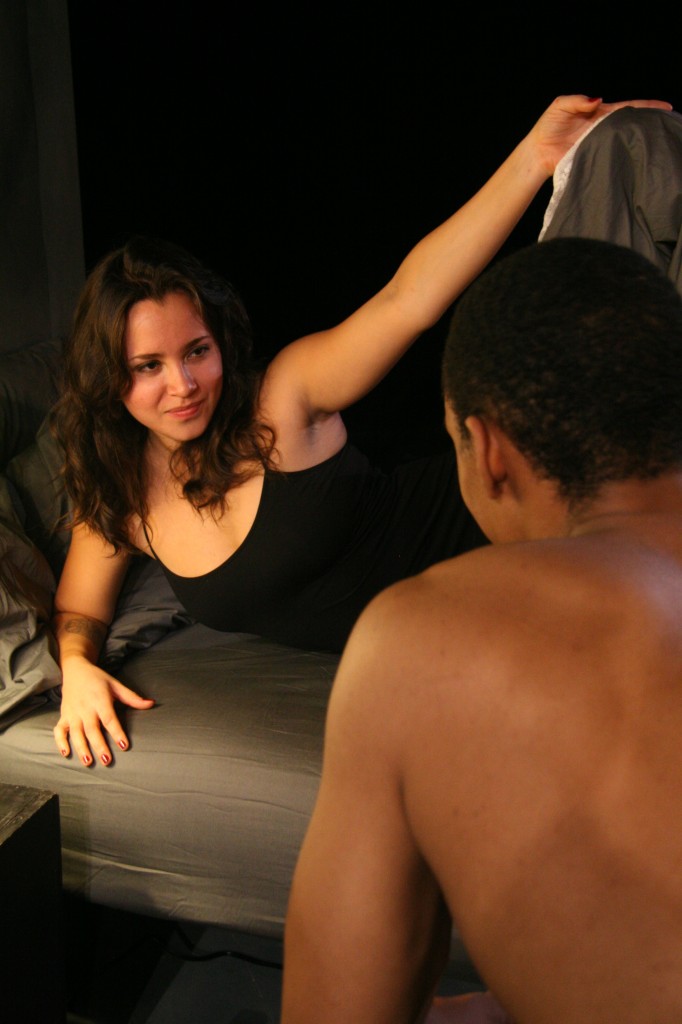
More "Youth Hostel": Carmen Zilles and Will Cobbs. Photo by Ethan Heard.
Is it titillating? I don’t think that’s for me to say. Did you find Belleville at the Yale Rep titillating? Attractive people are having simulated sex and professing to put aside severe problems, in scenarios where it’s clear that greater difficulties are mounting. There are personal priorities to sort out if you want to be turned on by this show. Let’s just say it’s not celebratory. In the classic legal sense of having no redeeming social value, it’s not at all pornographic. It’s, you know, NAKED and RAW, in body and mind.
The anger, resentment, nervousness and disgust which fuels these plays is far more intense than the lust. Yet the sex acts are so gamely and enjoyably enacted by the ensemble (especially the five in the show’s centerpiece The Youth Hostel) that they provide a neat physical release which beautifully balances the internal anguish of Shawn’s characters.
As engrossing as the pages-long monologues he’s devised in his better-known dramas such as Aunt Dan and Lemon or The Fever can be, other Wallace Shawn works would definitely benefit from long, glorious bouts of fucking. Shawn’s scripts require a nerve-popping level of intensely, much of it intellectual. A Thought in Three Parts is more of a full-body work-out, and a more physical interaction than just throwing about blankets of rage.
A Thought in Three Parts isn’t really out to shock; it simply doesn’t want to shortchange its propulsive subject matter. Moments of calm reflection fill these plays, but so do moments of outrage which come at the end of too many of those reflective moments. Shawn doesn’t overwrite or overplay these exchanges. He gets down and dirty. Director Hallie Cooper-Novack likewise doesn’t slow down the action to signal the intellectual or ironic properties of the piece. Adam Rigg has designed the set and lights for crisp practicality and sturdiness; no creaking matresses or soft lighting, everything clear and uncluttered. The cast, all of them, are shorthair-triggered to switch up emotions at the drop of their pants. An admirable mix of attitudes, accents and body types, they infuse Shawn’s discourse with variety and vitality. They get into themselves, they come out of themselves, and then they just come.
Ejaculation, in both the melodramatic conversational sense of the word and its more popular sexual connotation, just seems the natural culmination of what’s going on here.
